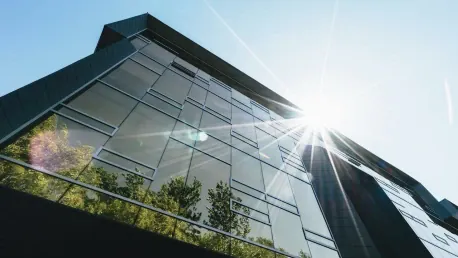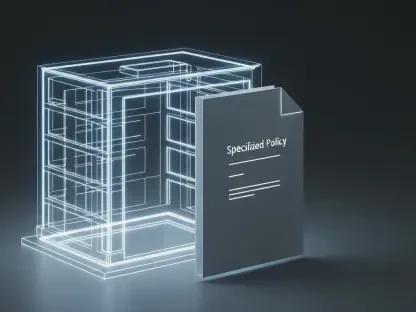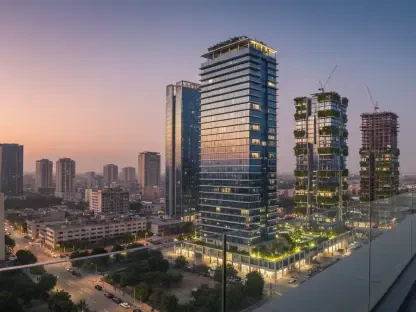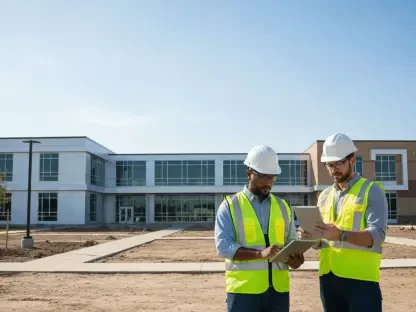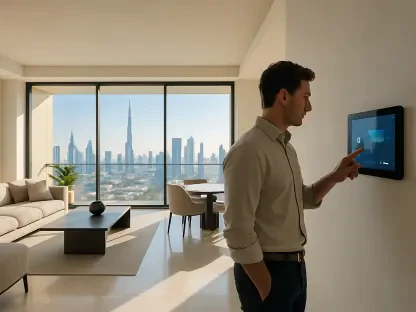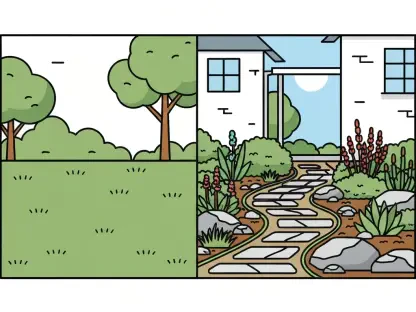The construction industry is at a critical juncture as it grapples with the twin imperatives of innovation and sustainability, balancing the urgent need to combat climate change with the demands of a growing global population. Gillian Charlesworth, CEO of Building Research Establishment (BRE), places great emphasis on the built environment’s significant role in achieving net zero emissions. Remarkably, the construction sector accounts for 40% of global carbon emissions, a staggering figure that underscores the urgent need for transformative practices. The conversation is evolving beyond just environmentally friendly buildings to encompass holistic approaches that address the entire lifecycle of structures, from design and construction to operation, maintenance, and eventual deconstruction. BRE’s initiatives, such as the BREEAM certification scheme, are pivotal in setting benchmarks for sustainable building practices. These standards push the industry towards using innovative construction materials and methodologies like low-carbon concrete alternatives, advanced insulation materials, and smarter energy management systems. The focus is on reducing buildings’ carbon footprints and fostering a more sustainable built environment.
Retrofits: The Key to Modern Energy Efficiency
A critical aspect of addressing the environmental impact of construction lies in retrofitting existing buildings to meet modern energy efficiency standards. The need for retrofit programs is becoming ever more urgent given that the majority of structures that stand today will remain in use by 2050. These existing buildings were mostly designed and constructed at a time when energy efficiency was not a primary concern, resulting in chronic heat leakage and wasted energy resources. Charlesworth supports the call by UK Members of Parliament for a “national war effort” for retrofitting, highlighting the need for stronger government policies and funding to accelerate this process. Retrofitting encompasses a broad array of actions, from upgrading insulation and installing energy-efficient windows to integrating renewable energy systems. Each of these improvements can substantially reduce the energy consumption of a building, making it a cornerstone of any strategy aimed at lowering overall carbon emissions from the built environment.
The challenge, however, lies not only in the technical aspects but also in mobilizing the necessary investment and resources to undertake such a widespread initiative. The economic benefits, however, are substantial, including reduced energy costs for building owners and tenants, job creation in the green tech sector, and the broader societal gains from reduced strain on national energy grids. It’s a transformative prospect that promises to rejuvenate aged infrastructure while addressing the pressing need for climate action. Retrofitting presents a dual opportunity: enhancing building performance while advancing the wider goal of achieving net zero emissions, illustrating a path where economic and environmental objectives align harmoniously.
Advancements in Digital Tools
The potential for digital tools to revolutionize the construction industry cannot be overstated. Among these advancements, Building Information Modelling (BIM) stands out as a game-changer. BIM offers a precise and thorough approach to planning, designing, and managing construction projects, significantly reducing material waste and improving energy performance. By creating detailed digital representations of buildings, stakeholders can forecast potential issues and optimize resources, leading to more efficient and sustainable practices. BRE’s commitment to developing and promoting digital tools includes a BIM certification scheme aimed at helping industry professionals harness these technologies effectively. The integration of digital tools into the construction process is no longer an option but a necessity for the future sustainability of the industry.
Training and education play a vital role in ensuring that the workforce is adequately equipped to utilize these advanced digital tools. Increased investment in professional development programs is essential to bridge the skills gap and foster a culture of continuous learning within the industry. As digital tools become more sophisticated, the ability to leverage them effectively will be a significant determinant of success. With BIM and other innovations, the construction industry can move towards a more data-driven, transparent, and environmentally responsible approach to building. The emphasis on digital transformations highlights a forward-thinking sector ready to embrace the technological advancements necessary to meet modern challenges.
A Collective Effort for Sustainable Practices
The construction industry is at a pivotal moment as it faces the dual challenges of innovation and sustainability. It must balance the urgent necessity of combating climate change with the needs of a growing global population. Gillian Charlesworth, CEO of Building Research Establishment (BRE), underscores the built environment’s essential role in achieving net zero emissions. Astonishingly, the construction sector accounts for 40% of global carbon emissions, highlighting the immediate requirement for transformative practices. The focus has shifted from merely environmentally friendly buildings to holistic approaches addressing structures’ entire lifecycle—from design and construction to operation, maintenance, and eventual deconstruction. BRE’s efforts, such as the BREEAM certification scheme, are crucial for setting benchmarks in sustainable building practices. These standards drive the industry towards innovative methods, including low-carbon concrete alternatives, sophisticated insulation materials, and smarter energy management systems. The overarching goal is to reduce buildings’ carbon footprints and promote a more sustainable built environment.
